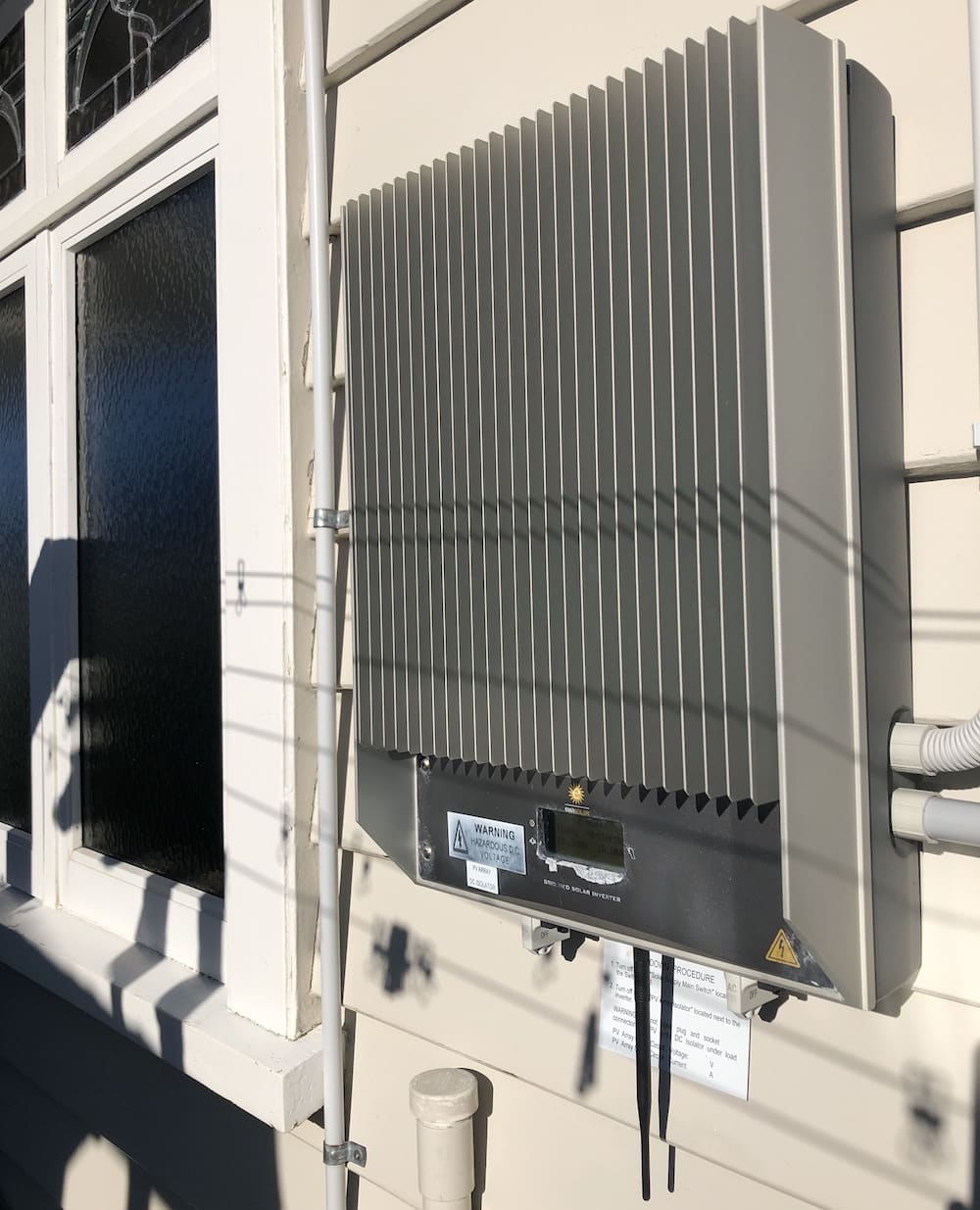All about solar panels
03 July 2021
By popular request, this post will give an overview of the solar panel installation that we have on our roof, including the installation, inverter and more.
One of the first things that we did on our electrification journey was to install solar panels on our roof. The panels we have installed are photo-voltaic (PV) panels, which convert the sun’s energy into electricity.
PV or hot water panels?
We did consider the hot water panels that create hot water that can be used by showers, etc. We decided against the hot water panels for a few reasons:
More complicated - there’s plumbing, etc to consider. What if you get a leak, or it overheats on a hot/sunny day? Moving parts - not sure? Solar PV is very simple - just some cables and an inverter. No moving parts.
Multi use - the generated electricity can be used for multiple purposes - heating, hot water, cooking, lighting, car/bike charging, etc.
Similar price - at the time, the prices were not terribly different.
The equipment
There are two main parts to a solar PV installation - the panels and an inverter.
Solar PV Panels
We have 20 panels on our roof. Each panel generates up to 250 W of electricity each. This means that our system will generate a maximum of 5 kW of electricity.
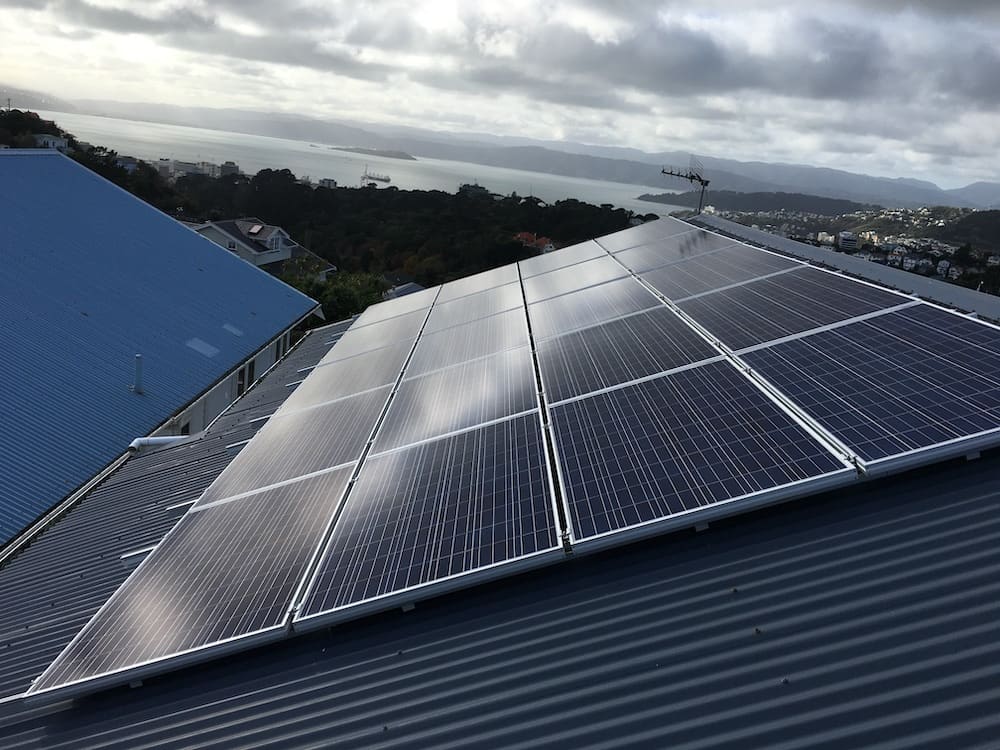
These panels are fairly standard, with most panels looking the same. The main difference is that newer panels have improved efficiency, generating 300-350 watts. The dimensions and framing are pretty standard.
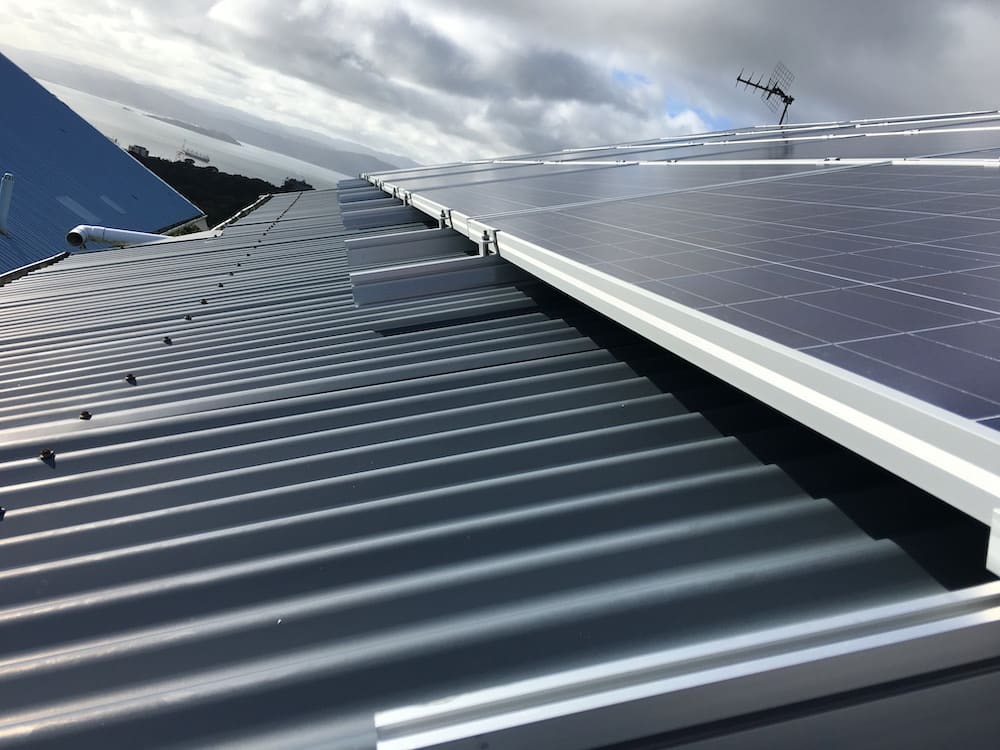
The panels are mounted on an aluminium frame, and this is attached to our roof. The installers will need to drill into your roof to mount it, but this is fairly normal. We haven’t had any issues with leaks, or strong winds. They seem pretty solid.
The panels have a 25 year warranty with the only maintenance required being an occasional check for leaves or dirt (not normally a problem in windy Wellington).
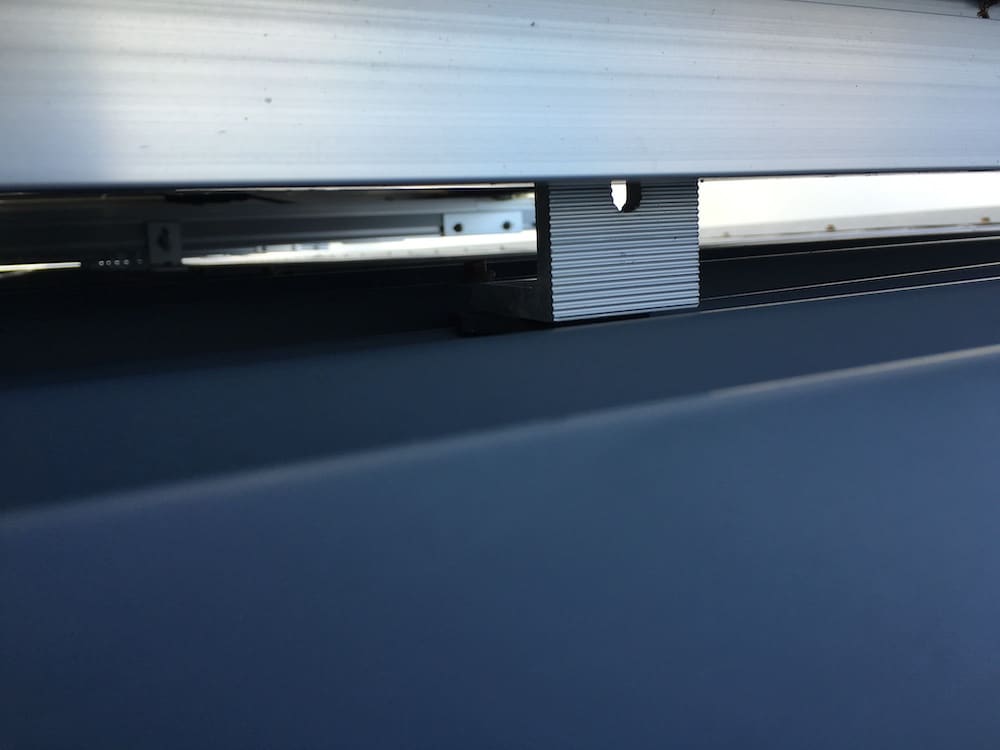
The wiring for the panels is arranged into two “strings”, and these feed into the inverter.
The inverter
The role of the inverter is to convert direct current (DC) into the AC electricity that is suitable for the house.
The inverter has a web interface that allows you to monitor current and historical generation.
The inverter requires an active electrical supply to generate. It will match the phase of the AC current, and “top it up” with the generated energy. If there is a power cut, most inverters will stop generation - this is a safety feature to avoid the risk of electric shock to line maintenance people.
The inverter has a 10 year warranty.
How does it work?
The two strings of solar panels are connected to the inverter. This is then connected to the main switchboard, via an additional “main” fuse. The grid supply from the street also connects (in parallel) to the switchboard, via the meters. We have two meters, one records incoming (import) electricity, and the other records outgoing (export) electricity.
When there is more solar electricity generation than the house can use, it “overflows” back out to the grid.

You can see the two main supply fuses in this switchboard image:

Roof aspects
Our roof is a north-faced pitched roof. This is ideal for solar generation as you receive the maximum possible generation.

But, different aspects can have benefits - for example, a west facing roof will give more generation later in the day, and this is often when our energy needs are highest.
You can also have panels attached to different roof aspects. This can be done, and is reasonably common on smaller roofs.
Generation expectations
As you might expect, the best generation occurs during the middle of summer, when the sun is high in the sky, and the days are the longest. Our maximum generation for one day is around 42 kWh.
In winter, the maximum generation is around 20 kWh. In the image below, you can see the generation for a fine winter’s day. Generation starts around 9am, building to a peak around midday. Maximum generation lasts until around 2pm, when the sun begins to move lower in the sky. At 4pm, generation finishes as the sun moves towards the horizon.
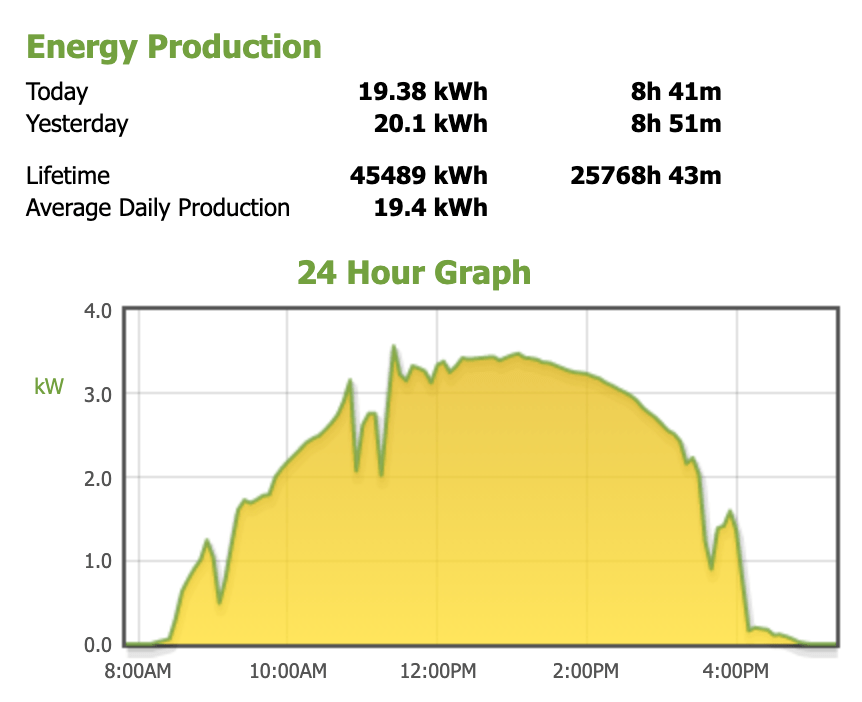
You can see that the peak output is around 3.5 kW, or 70% of maximum capacity. This screenshot was taken at the begining of July, soon after winter’s shortest day.
An average week in winter
The chart below shows a typical winter week in Wellington. Monday (27th) was a terrible rainy day with practically no sun. Tuesday (28th) and Saturday/Sunday were all lovely (2rd, 3rd). The mid-week days were mostly cloudy with a little sun.
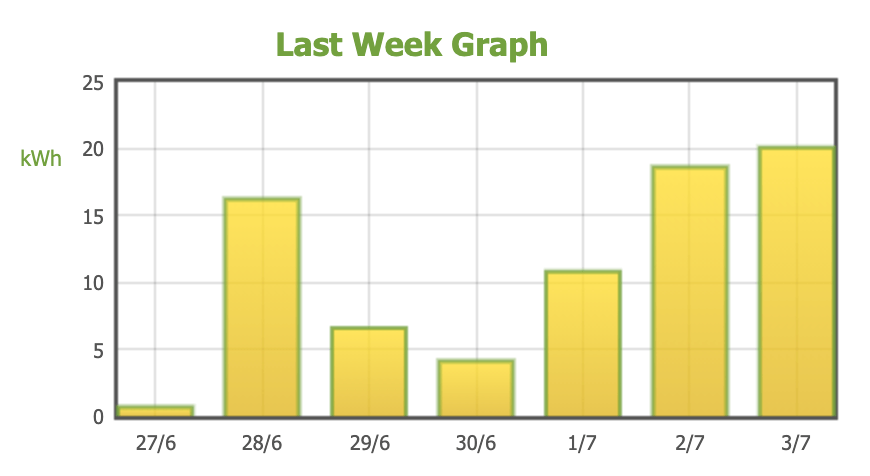
In Australia, larger solar systems are becoming the norm. I have read that the average system is getting closer to 10 kW.
With a larger system, you would get the more benefit during the winter months. This would offset more of the electricity consumption, especially on cloudy days.
A full 12 months
Statistics for the year of 2020:
- Total generation: 7,100 kWh
- Average generation: 19.4 kWh per day

Costs and payback
We ordered our 5 kW system in December 2014 and paid $15,679 including panels, inverter and installation. Since then, prices have consistently reduced each year. I have seen an advertisement for a similar system, but including a 5 kWh battery for $13,499 which is an incredible price.
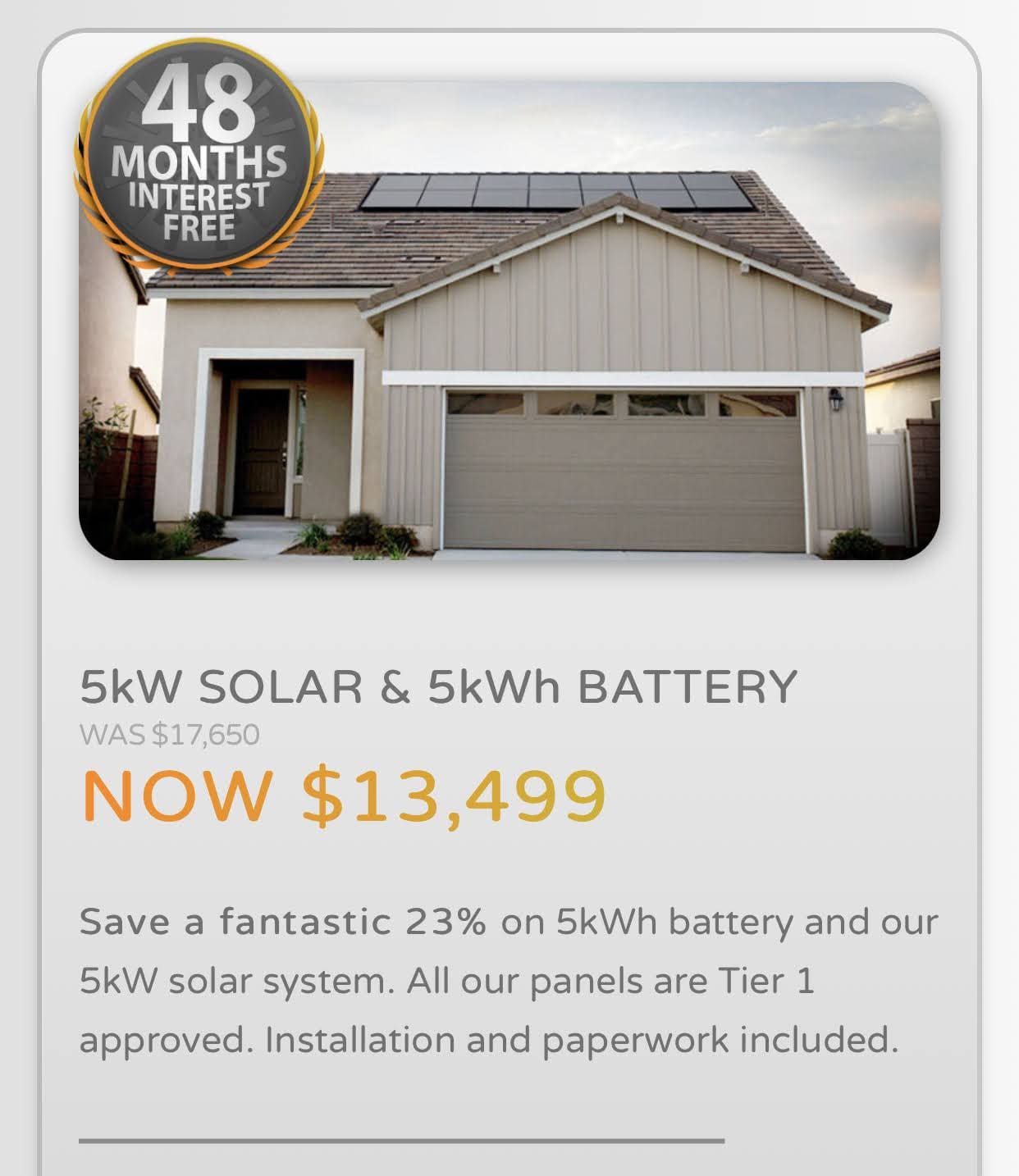
Payback
How long does it take to pay off a system like this? The answer to the question primarily relates to how much electricity can the system avoid you from having to purchase from the grid. The secondary answer relates to the price that your electricity retailer will pay you for exporting your excess generation.
In our case, we pay on average 29c per kilowatt hour (including lines charges, the daily rate and GST). Every single kilowatt hour of electricity that we don’t have to purchase from the grid saves us 29 cents.
But, you do have to remember that during weekdays the house is often empty during the day, so to make use of that midday sunshine - you have to make special arrangements. This could involve scheduling your hot water to be heated then, or delaying the start of your dishwasher or washing machine. Some of these things are easier to do that others. A battery is another way to acheive this, but their capacity is often much smaller than the amount of electricity that is generated.
Exported Electricity is often at a much lower rate - in our situation, we are paid 7.6 cents for each kilowatt hour of generation exported. What this means is that we pay four times more for the electricity that we sell verses the purchase cost. But even at this low rate, it does amount to a significant quantity in the sunnier months. We generally have a negative power bill for 2 or 3 months of the summer, and a very small bill in early autumn.
There are more generous options from some of the boutique energy retailers. I’ve seen an arrangement where you buy/sell your excess generation to family members (or friends) at pre-agreed prices (with a margin for the retailer). Other retailers offer higher buyback rates, but also with higher sell rates.
We are sticking with our retailer Ecotricity as they have time of use charges (cheaper at night) which we make full use of.
Your situation will be unique to you. We have found that we can make more use of the generated electicity as we have slowly electrified most of our energy usage. We now have an electric car which is typically charged for free on sunny days. Our heating and cooking are also electric, and are powered by the sun (or the grid when cloudy or after dark).
Summary
We am still happy with the choice to install solar panels back in 2014. They have been maintenance free with no trouble at all. Over the years, we have slowly converted our fossil-fuel based applicances, heating and transport to electricity. As a result, we have been able to make more and more use of the generated electricity - and reduced the payback period on our investment.
My only wish is that we had installed a larger system.
Related posts
- My Tesla Powerwall Experience
- Review of the Mitsubushi Ecodan
- Four years of household energy costs and emissions
- Comparison of fossil-fuel with electric-only energy costs for spring
- Household energy costs comparison for winter
- Price Comparison of Electricity and Gas
- Energy efficiency after 1 week
- Conversion of gas central heating to electric
- Recording our carbon footprint at home
- Please don’t wait for the Politicians
